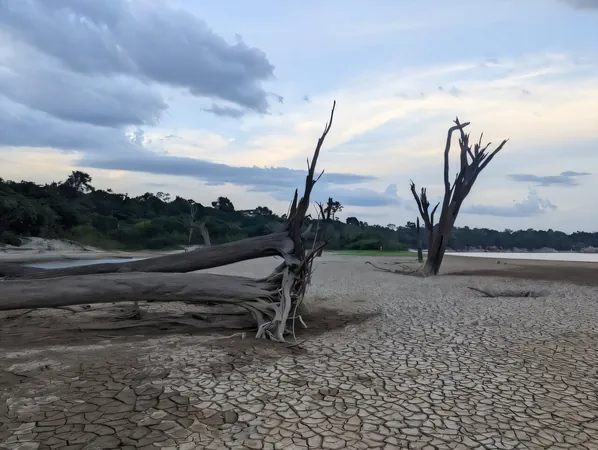
Drought Alert: How Mirror Molecules in the Amazon Are Signaling Ecosystem Stress
2025-09-05
Author: Michael
In 2023, the Amazon rainforest faced its most severe drought on record, leading to alarming drops in river levels and the decline of vegetation across the ecosystem. This intense heatwave and water scarcity pushed plants into survival mode, prompting them to release higher amounts of monoterpenes—volatile organic compounds that serve as both a defense mechanism and a form of communication with their environment.
Among these compounds, α-pinene, which carries a distinct pine scent, exists in mirror-image pairs called enantiomers. Remarkably, the ratio of these two forms shifts significantly under stress, such as during droughts. Researchers from the Max Planck Institute for Chemistry dove into this phenomenon, tracking changes in these ratios before, during, and after the drought in their study published in Communications Earth & Environment.
Their findings were eye-opening: under normal conditions, a stable ratio of the α-pinene enantiomers was observed. However, as drought conditions intensified, this ratio skewed dramatically, even reversing during the peak drought period. Essentially, these mirror molecules became indicators of ecosystem stress.
Giovanni Pugliese, a researcher who braved the harsh conditions during sample collection, noted the visible signs of distress in the forest—yellowing leaves and cracking clay soil were prevalent. This year's drought coincided with an El Niño event, known for bringing drought and soaring temperatures to the Amazon, exacerbating an already dire situation.
The research team conducted their measurements at the Amazon Tall Tower Observatory (ATTO), located 150 kilometers northeast of Manaus, where they collected air samples 24 meters up in the forest canopy. Back in their Mainz lab, they utilized advanced techniques to analyze the enantiomer ratios.
Joseph Byron, the study's lead author, shared that the initial findings established a baseline ratio. As the drought worsened due to the El Niño conditions, the team noted significant shifts in this ratio—a reflection of the rainforest's stressed state.
Project leader Jonathan Williams expressed his amazement at how these measurements directly revealed the rainforest’s response to environmental stress. During the peak of the drought, the dramatic ratio reversal indicated that vegetation was shutting down photosynthesis to conserve vital water resources.
Building on previous research conducted in a controlled greenhouse setting, where similar behaviors in α-pinene release were documented, this study confirmed those findings in the wild. The Amazon rainforest, the largest contributor of biogenic volatile compounds, can now better represent emissions and their changes under drought in climate models.
As climate change continues to increase the frequency and severity of El Niño-related droughts, understanding these molecular signals may prove crucial in safeguarding the future of the Amazon rainforest.









 Brasil (PT)
Brasil (PT)
 Canada (EN)
Canada (EN)
 Chile (ES)
Chile (ES)
 Česko (CS)
Česko (CS)
 대한민국 (KO)
대한민국 (KO)
 España (ES)
España (ES)
 France (FR)
France (FR)
 Hong Kong (EN)
Hong Kong (EN)
 Italia (IT)
Italia (IT)
 日本 (JA)
日本 (JA)
 Magyarország (HU)
Magyarország (HU)
 Norge (NO)
Norge (NO)
 Polska (PL)
Polska (PL)
 Schweiz (DE)
Schweiz (DE)
 Singapore (EN)
Singapore (EN)
 Sverige (SV)
Sverige (SV)
 Suomi (FI)
Suomi (FI)
 Türkiye (TR)
Türkiye (TR)
 الإمارات العربية المتحدة (AR)
الإمارات العربية المتحدة (AR)